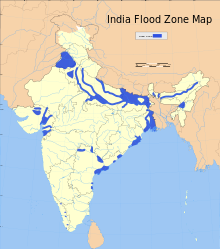
Hurricane Stan was the deadliest tropical cyclone of the 2005 Atlantic hurricane season. A relatively weak system that affected areas of Central America and Mexico in early October 2005, Stan was the eighteenth named storm and eleventh hurricane of the 2005 season, having formed from a tropical wave on October 1 after it had moved into the western Caribbean. The depression slowly intensified, and reached tropical storm intensity the following day, before subsequently making its first landfall on the Yucatán Peninsula. While traversing the peninsula, the tropical storm weakened, but was able to re-intensify once it entered the Bay of Campeche. Under favorable conditions for tropical development, Stan attained hurricane strength on October 4, and later reached peak intensity with winds of 80 mph (130 km/h) and a minimum barometric pressure of 977 mbar (28.9 inHg). The hurricane maintained this intensity until landfall in the Mexican state of Veracruz later the same day. Once over the mountainous terrain of Mexico, however, Stan quickly weakened, and dissipated on October 5.
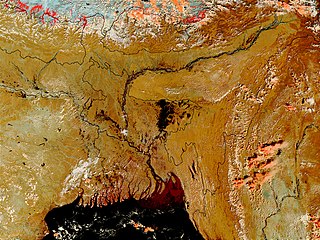
Bangladesh, being situated on the Brahmaputra River Delta is a land of many rivers, and as a result is very prone to flooding. Due to being part of such a basin and being less than 5 meters above mean sea level, Bangladesh faces the cumulative effects of floods due to water flashing from nearby hills, the accumulation of the inflow of water from upstream catchments, and locally heavy rainfall enhanced by drainage congestion. Bangladesh faces this problem almost every year. Coastal flooding, combined with the bursting of river banks is common, and severely affects the landscape and society of Bangladesh. 80% of Bangladesh is floodplain, and it has an extensive sea coastline, rendering the nation very much at risk of periodic widespread damage. Whilst more permanent defenses, strengthened with reinforced concrete, are being built, many embankments are composed purely of soil and turf and made by local farmers. Flooding normally occurs during the monsoon season from June to September. The convectional rainfall of the monsoon is added to by relief rainfall caused by the Himalayas. Meltwater from the Himalayas is also a significant input.

Severe Cyclonic Storm Aila was the second named tropical cyclone of the 2009 North Indian Ocean cyclone season. Warned by both the Regional Specialized Meteorological Center (RMSC) and Joint Typhoon Warning Center (JTWC), Aila formed over a disturbance over the Bay of Bengal on May 23, 2009 and started to intensify and organize reaching sustained wind speeds of 110 kmh (70 mph). It was the worst natural disaster to affect Bangladesh since Cyclone Sidr in November 2007. A relatively strong tropical cyclone, it caused extensive damage in India and Bangladesh.

The floods in Pakistan began in late July 2010, resulting from heavy monsoon rains in the Khyber Pakhtunkhwa, Sindh, Punjab and, Balochistan regions of Pakistan, which affected the Indus River basin. Approximately one-fifth of Pakistan's total land area was affected by floods, with the Khyber Pakhtunkhwa province facing the brunt of the damage and casualties. Nationwide, there were 1,985 deaths. According to Pakistani government data, the floods directly affected about 20 million people, mostly by destruction of property, livelihood and infrastructure.
This is a list of notable recorded floods that have occurred in India. Floods are the most common natural disaster in India. The heaviest southwest, the Brahmaputra, and other rivers to distend their banks, often flooding surrounding areas.

Deep Depression ARB 02 was a weak tropical cyclone which brought heavy rains and flooding to the Indian state of Gujarat in June 2015. It was the third tropical cyclone and second deep depression of the 2015 North Indian Ocean cyclone season.

Following heavy rain, Gujarat state of India was affected by the flood in July 2015. The flood resulted in at least 72 deaths.

The 2015 South India floods resulted from heavy rainfall generated by the annual northeast monsoon in November–December 2015. They affected the Coromandel Coast region of the South Indian states of Tamil Nadu and Andhra Pradesh. More than 500 people were killed and over 1.8 million people were displaced. With estimates of damages and losses ranging from nearly ₹200 billion (US$2 billion) to over ₹1 trillion (US$12 billion), the floods were the costliest to have occurred in 2015, and were among the costliest natural disasters of the year.
The Brahmaputra floods refers to a catastrophic flood event that occurred in 2012 along the Brahmaputra River and its tributaries, as well as in subsequent years.
In mid-March 2019, monsoonal downpours caused widespread flooding and landslides across South Asia.
The 2019 Indian floods were a series of floods that affected over thirteen states in late July and early August 2019, due to excessive rains. At least 200 people died and about a million people were displaced. Karnataka and Maharashtra were the most severely affected states. People died but many were rescued with the help of the Indian Navy.

On 1 August 2019, first week, due to heavy rainfall in the Monsoon season, severe flood affected the southern Indian State of Karnataka. As a security measure in the prevailing situation of heavy rains, India Meteorological Department issued Red alert to several regions of coastal and malnad regions of Karnataka state.

The 1992 India–Pakistan floods was a deadly flood caused by a five days long heavy monsoon rains and severe weather that occurred on 7 September 1992 across the north-Pakistan of Azad Kashmir, North-West Frontier Province and Indian administered state of Jammu and Kashmir. Severe floods left at least 2,496 fatalities, including 2,000 deaths in Pakistan administered state, 296 in Punjab province, and 200 in northern India with several others missing. The floods swept away more than 12,672 villages and several people were buried alive due to landslides near mountains. Punjab, that shares its borders with Azad Kashmir, suffered a heavy agriculture loss in its economic history.

2020 Assam floods refers to the significant flood event of the Brahmaputra River in the Indian north-eastern state of Assam and coincided with the COVID-19 pandemic. Initial flooding started in May 2020 due to heavy rainfall affecting 30,000 and destroying crops across 5 districts. As of October 2020 the floods affected over five million people, claiming the lives of 123 people, with an additional 26 deaths due to landslides, 5474 villages were affected and over one hundred and fifty thousand people found refuge in relief camps.
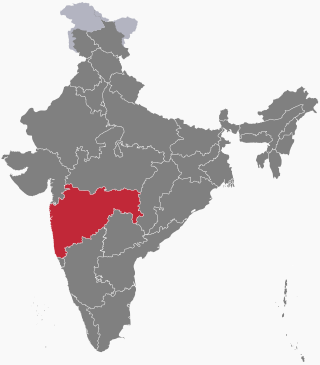
A series of floods took place across the Indian State of Maharashtra in 2021. As of 28 July 2021, around 251 people have died and over 100 are still missing due to floods and landslides. Thirteen districts have been affected in western Maharashtra.

Beginning in May 2022, deadly floods hit northeastern India and Bangladesh. Over 9 million people in both countries have been affected, and around 300 people have been killed.
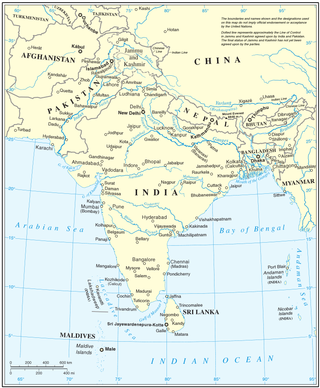
From January to October 2022, excessive rainfall and widespread monsoon flooding occurred in the South Asian countries of Afghanistan, Bangladesh, India, Nepal, Pakistan, and Sri Lanka. It has become the region's deadliest floods since 2020, with over 4,700 people dead.
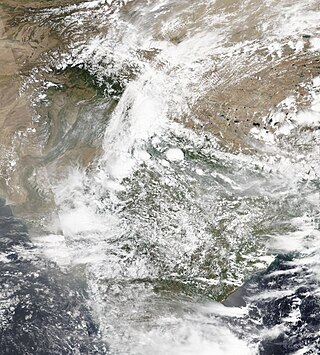
Heavy rainfall during the 2023 monsoon season resulted in severe flooding and landslides across Northern India, primarily affecting residents in Himachal Pradesh, Punjab, Chandigarh, Uttarakhand, Jammu and Kashmir, Haryana, Rajasthan and Delhi.


